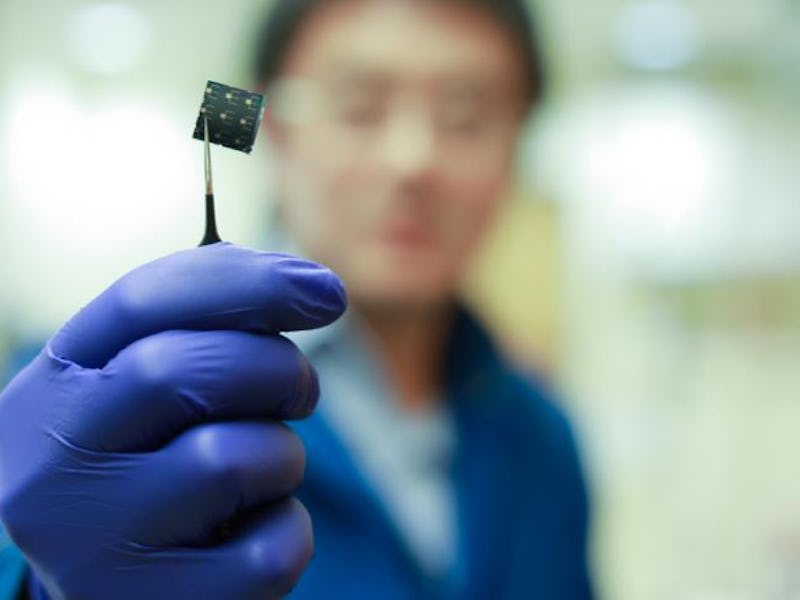A New Kind of Solar Cell Developed at UCLA Just Broke Efficiency Records
By a lot.

A new kind of thin film solar cell developed by researchers at the UCLA Samueli School of Engineering just broke a record for efficiently harvesting energy from sunlight. By adding a new layer to common solar cells, the researchers estimate they can reduce solar energy costs by about a fifth, in a relatively simple process that can easily be incorporated into mainstream solar cell manufacturing.
The new technique involved a compound called perovskite, which is a combination of lead and iodine that’s good at capturing energy from sunlight. The researchers sprayed traditional solar cells with the perovskite, making a thin second layer. These “dual layer” solar cells harvested far more energy. The results were published today in the journal Science.
“We’re drawing energy from two distinct parts of the solar spectrum over the same device area,” Yang Yang, a professor of materials science at UCLA, told UCLA Newsroom. “This increases the amount of energy generated from sunlight compared to the CIGS layer alone.”
Best of all, making perovskite is cheap and inexpensive, meaning that the whole process could theoretically be easily incorporated into the manufacturing process for traditional solar panel makers.
Notably, the researchers say the process can be incorporated into traditional solar cell manufacturing.
The team started with a traditional cell that was capable of harvesting about 18.7 percent of the energy in sunlight on its own. The base cell was tiny, just two thousandths of a millimeter thick. They then added the even slimmer layer made with perovskite to the base using a new type of nanoscale interface that the researchers developed, which helped boost the voltage.
Instead of 18.7 percent, these new cells were able to capture 22.4 percent of the sunlight’s energy, an increase of around 20 percent. The team hopes to continue refining the cells and getting efficiency up to 30 percent.
Tactics that can increase solar energy efficiency are hugely important to the renewable energy transition, the maximum theoretical efficiency for the most common kind of photovoltaic cell is only 29 percent. As we wrote in a previous story, “sunlight’s bouncing around, getting absorbed as waste heat, and just generally not being converted into electricity.”
Their new innovation also helped the group shatter the previous record for efficiency for a perovskite-CIGS tandem solar cell, which was just 10.9 percent. That record was set back in 2015 by a group of researchers working with IBM.